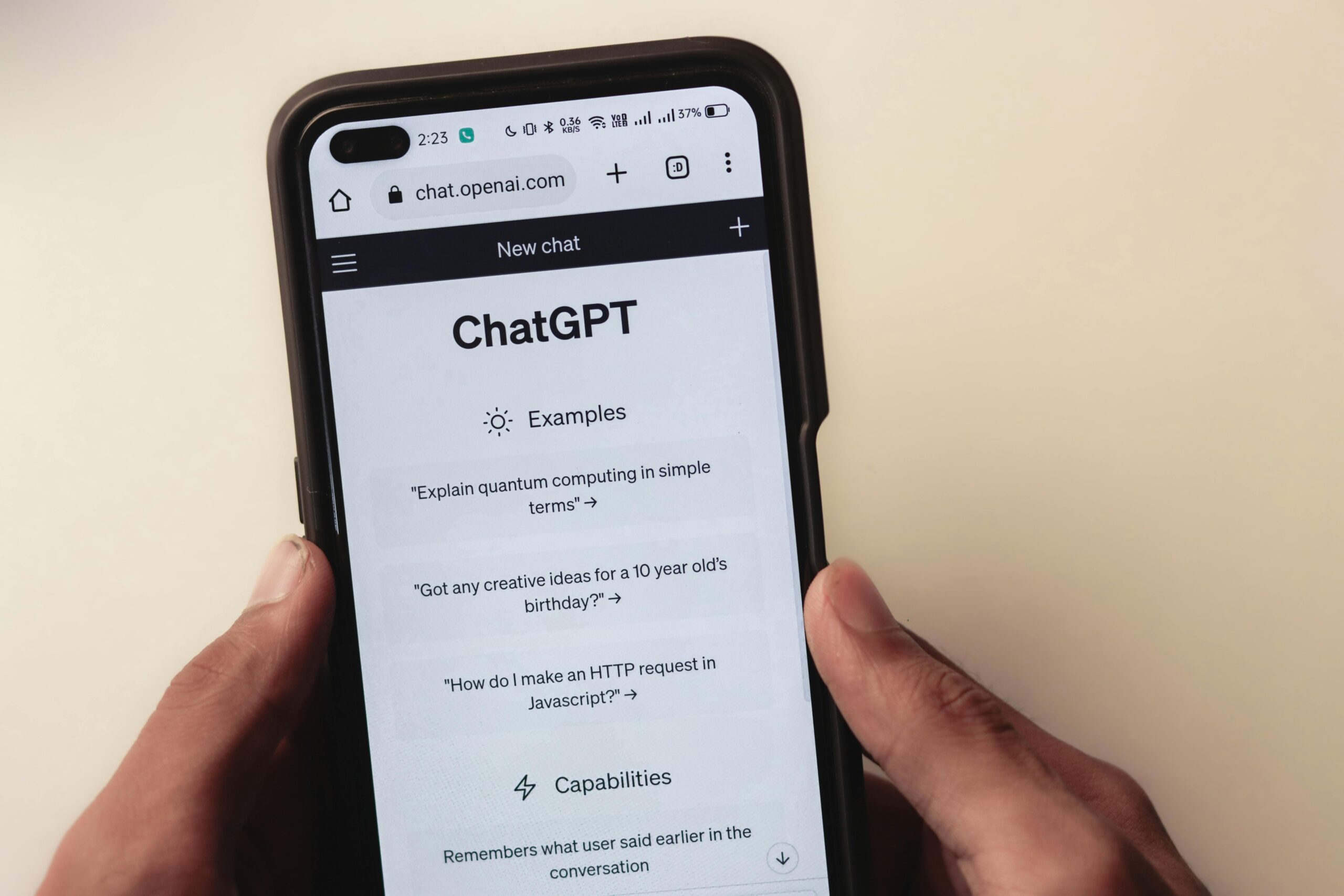7 Formats ChatGPT Loves (and How to Write Them)
After the rise of AI, it hasn’t taken long for content writers to realize that changes must be made for their online writing to get noticed. One big goal now is to write for generative search—which means writing AI-citable content that ChatGPT and other Large Language Models (LLMs) quote in their summaries, or mention in their “conversations” with users.
What Are the Main Points to Consider When Writing in Formats ChatGPT Prefers?
Writing for generative AI isn’t too different from writing with SEO in mind. For example, you still need to use keywords and have authoritative and accurate content. One difference with AI-citable content, however, is keeping a prompt-friendly structure in mind. This basically involves using a structure that is easy to skim, easy to read, and useful for someone reading about the given topic.
The formats ChatGPT loves include:
- Summaries
- Questions with Answers
- Lists
- Bullet Points
- Comparison Tables
- How-to Guides
- Definitions
This skimmable kind of writing is also helpful for people who are just trying to get a quick answer or have a short attention span. Giving them the information they need quickly is always better than having them click away. Long form blocks of text still have value, but there’s a different time and place for that. However, it’s still important to sound like a regular human, so use natural sound language in any format.
Now, let’s get to know these formats a little better:
1. Summaries
One of the main functions of ChatGPT is to search through all available information and summarize it to provide a highly relevant and easy to read answer to the user. If your pages have a great summary about whatever topic you are writing about and it’s relevant to your expertise, then ChatGPT might like to use that–providing you with more visibility.
How to do it: Although it might seem counterintuitive, summarizing your content at the beginning of the page is actually very helpful. This enables ChatGPT to use your summary for people who are interested in the subject and also for readers to absorb the main points quickly when they are in a hurry (or have a short attention span). Make sure to include your main points and use clear language.
Example: The section before the list starts in this post serves as an example of a summary. The summary runs through the main points of the article and the user can continue reading if they want more details.
2. Question and Answer Formats/FAQS
ChatGPT and other LLMs are often used for answering specific questions from users, so content written with this format is more likely to match a user’s question and get noticed.
How to do it: Present the question and answer clearly, so that the reader or LLM can easily distinguish the question from the answer. This might be in an FAQs section with several other questions, or with a subheader as the question and the answer underneath.
It’s also important to answer the question within the first couple of sentences–rather than drawing it out with a long story and answering at the end. ChaptGPT prefers formats that are direct, short, and to the point, but still in a human voice with natural sounding language.
Example:
Should I keep including keywords in my writing when writing for generative AI?
Yes! Keywords and traditional SEO are still important for getting your content seen.
Will my content ever be noticed by AI if I don’t include these formats?
If your content is very useful and happens to satisfy the user’s intent very well, it is still possible it will be used by AI and shown to the user. However, following these guidelines will increase the probability that your content is seen.
3. Lists
Everyone loves a good list, and ChatGPT is no exception. LLMs are trained on a lot of structured information, including lists. It turns out that lists also offer a good way to answer a lot of user questions. For example, “best sushi places in Atlanta” or “home remedies for a cough” are great list fodder. These kinds of user queries are common, and content that is already formatted in this way is easier for LLMs to parse.
How to do it: Everyone has made a list at some point in their life, but when writing for generative search, make sure to keep it fairly easy to scan through. Also, make sure to stay on topic and make lists that are relevant to the rest of your content to show ChatGPT that this is your area of expertise.
Example: This entire blog post is one example of a list. List-type posts are common, but here is a simpler example that you might find within other types of content.
5 Companies Developing AI Models
- OpenAI
- Apple
- Microsoft
- Nvidia
4. Bullet Points
Bullet points are one of the most common kinds of content LLMs quote. They’re another prompt-friendly structure, essentially for the same reasons lists are. They are easily skimmable and work in most of the same situations that lists work, unless you are dealing with rankings or items that must be in a certain order. They’re also just a great way to break up long blocks of content to avoid reader fatigue.
How to do it: Similar to lists, keep the content within each bullet direct and to the point. Remember, you want your ideas to look like something that ChatGPT would provide as an answer to a query. Sometimes this is just a word or two, but often it’s a sentence or two, depending on the context.
Don’t forget to introduce your bullet point sections with a quick sentence or subheader to let the reader or LLM know what they are looking at. This might be something like: “Here are some of our insider tips for trading stocks:” or “Insider Tips for Trading Stocks” as a header.
Also, make sure your bullet point sections flow well with the rest of the content on the page and not like someone stuck them there just to have a set of bullet points.
Example:
Quick Tips for Writing AI-Citable Content
- Make your content easily scannable by using lists, bullet points, and question/answer formats
- Write in a clear, direct, conversational tone
- Make authoritative content by citing reliable sources and writing about topics you’re an expert in
5. Comparison Tables
Comparison tables are incredibly useful tools for showing the differences and similarities between two (or three) options. People need to compare all kinds of things in their day to day lives, like which company to work for, which TV to buy, which neighborhood to move to, etc.
Comparison tables make it easy to grab all of the important facts about two different options and make a decision about which works better for a given situation without reading pages of information. This makes it an efficient way for ChatGPT to answer queries and also helps readers get what they need. If your content has an appropriate table that will satisfy the user’s intent, it will be more likely to share it with them.
How to do it: As with other AI-citable content, comparison tables should be direct and easy to read. It’s helpful to put yourself in the shoes of someone who really wants the comparison. What facts do they need to make their decision? Are there any important differences or similarities that will help them make their decision?
Your pairings should also make sense. Don’t try to stick comparison tables where they don’t belong. For example, it makes sense to compare the iPad Air vs. iPad Pro, but it makes no sense to compare the iPad Air with a typewriter.
Make sure to label each aspect appropriately and use headers with words like “vs.” or “compared to” in order to catch the attention of LLMs parsing through your content.
Example:
| ChatGPT vs. Claude | ||
| ChatGPT | Claude | |
| Company | OpenAI | Anthropic |
| Excels most at: | Quick answers/research | Creative work and coding |
| Free version | yes | yes |
6. How-to Guides
According to a survey by Frontdoor, 98% of Americans have tried a DIY project. It’s no surprise then that the internet is full of how-to videos, instructions, and DIY blogs. But, now ChatGPT is helping people get through these projects too and these how-to pages are definitely one of the formats ChatGPT loves to get its information from.
How to do it: Explaining how to do something usually works best with numbered instructions, especially if it has many steps. The most important part of how-to instructions is making sure each step is written clearly and that no steps are left out. You (and ChatGPT) want to make sure the reader gets the job done correctly without staring at the instructions trying to figure out what they mean.
Just because you’re providing instructions, doesn’t mean you have to sound like an instruction manual. Make sure to use natural sounding language when writing for generative search.
Again, ChatGPT prefers content that is authoritative and consistent with the rest of the website. So, if a blog that usually discusses cooking has a post about how to build a treehouse, ChatGPT will prefer using a how-to on this topic from a construction or woodworking website. So, stick to what you know–or at least separate your content into two different websites.
Example:
How to Add a Comparison Table in Google Docs
- Click on the area in your document where you want to put the table
- Click on “Insert” at the top of the page
- Click on “Table”
- Choose the arrangement of cells that you need (i.e. three across and five down)
- Click on the arrangement when the correct amount of cells are highlighted
- Your table should appear on your document and you can fill it in
7. Definitions
Who hasn’t googled an unfamiliar word they came across while reading? This one is pretty straightforward–a lot of people look up definitions and ChatGPT pulls the clearest and most direct definition from the most authoritative sources.
How to do it: You might have a lot of competition on this one with all the well-known dictionary sites out there. Still, focusing on definitions of words or jargon that are highly relevant to the type of content you provide and making them easily understandable will give you a fighting chance to get mentioned in the content LLMs quote since an expert on a particular topic is likely to have a better definition than a more general source.
Example:
Generative Search – A search engine feature that uses large learning models (LLMs) to interpret a user’s intent through their query, then search all available content on the topic, and provide an easy to understand summary, usually in a conversational tone.
Getting Started with GEO Content Formats
There are a lot of formats that ChatGPT likes to pull from, but there’s a good chance you were already using some of these in your content marketing strategy. If so, you’ve already started writing GEO (generative engine optimized) content formats.
However, there is some more nuance than before and it might take some time to get it down. And for some businesses that are trying to establish an online presence, the content writing part isn’t where you want to focus all your efforts. Or maybe you’ve just started trying to put together a content strategy and it’s simply eating up too much of your time. Either way, there are other options–like getting a little outside help.
We can help with that. Words Have Impact is your partner for content that people love, and that AI remembers. Get in touch if you’re ready to talk about your AI-citable content marketing strategy options.



